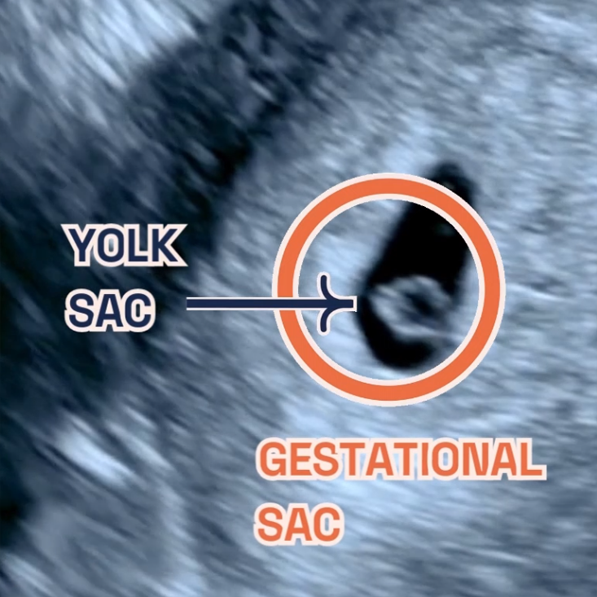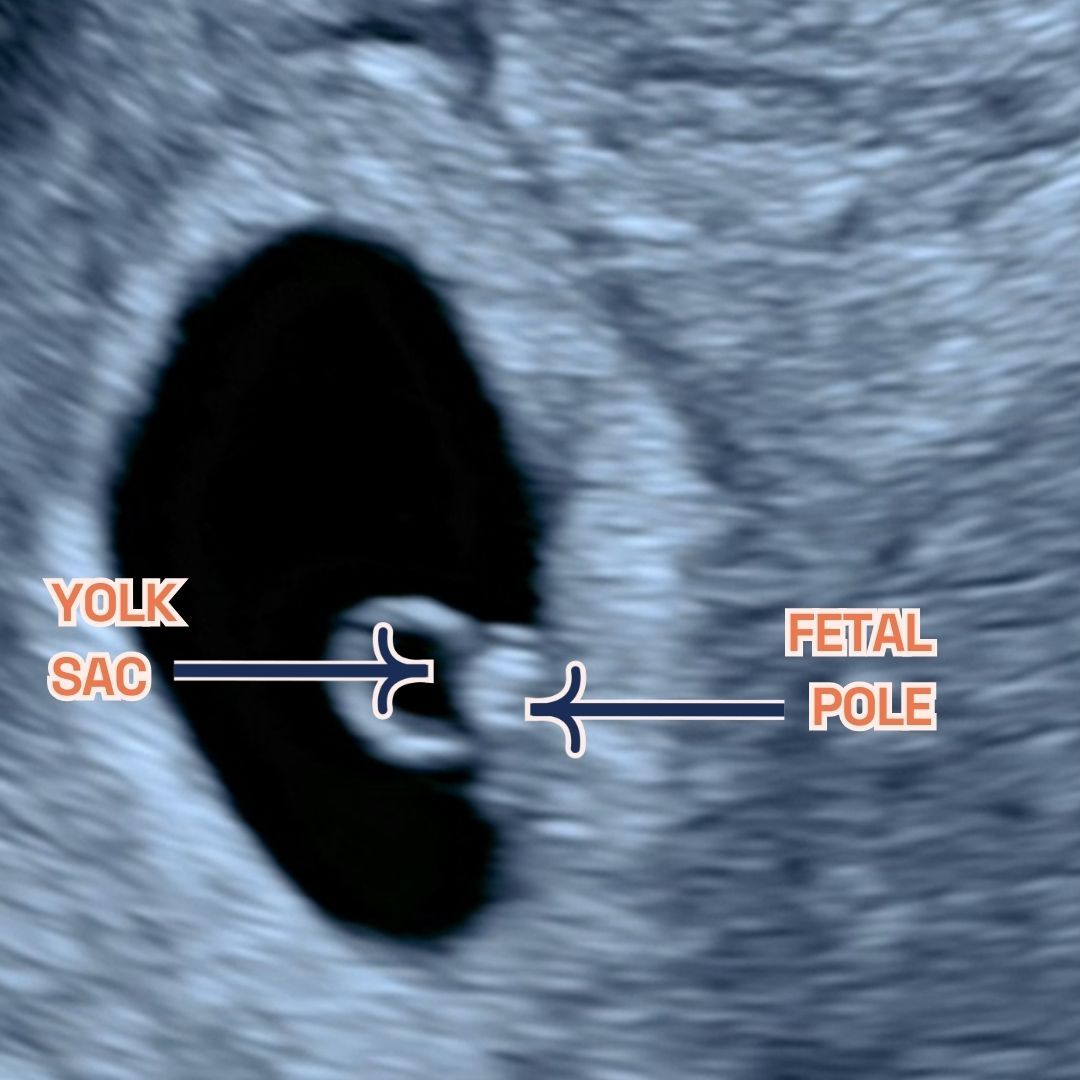Week 6 of your Pregnancy
Discovering your baby’s progress since week 5
Having progressed from the foundational moments of Week 5, Week 6 ushers in a new chapter of pregnancy. It’s a time when your little one, just past the size of an apple seed, shows the first signs of a heartbeat, symbolising vibrant growth and transformation. This period marks an exciting phase of development, building upon the crucial milestones of Week 5.
Welcome to Week 6 of your pregnancy journey, an exhilarating time filled with significant milestones. This week often marks the first opportunity for mothers-to-be to witness the wonders of their growing baby through early scans. As the heartbeat begins and the baby continues to develop, understanding the changes and knowing what to expect can provide comfort and excitement during this special time.
Key Concepts: fetal heartbeat
The First Beat: Around 6 weeks, your baby’s heart begins to beat with a rhythm that will continue to guide their growth throughout the pregnancy. This is a critical milestone in cardiac development, indicating healthy progression.
Observing the Heartbeat: During a 6 week ultrasound, often called a Viability/Dating Scan, you might be able to see the fetal heartbeat for the first time. It’s a profound moment for many parents, symbolising the new life growing inside.
Understanding the Rate: A fetal heartbeat at 6 weeks can range between 90-110 beats per minute and will increase in the coming weeks. This rapid rate supports the fetus’s growing need for oxygen and nutrients as development accelerates. The heart rate is a vital indicator of fetal health. A strong and clear heartbeat offers reassurance of the pregnancy’s viability and normal development.
Pregnancy Checklist at 6 Weeks
- If you haven’t already, now is the time to schedule your first private early pregnancy scan. This will confirm the pregnancy’s viability and provide valuable information about the baby’s development. You can read more on what to expect during your ultrasound scan here.
- Continue focusing on nutrition, especially foods rich in folic acid, iron, and calcium. Stay hydrated and get plenty of rest to support your body’s increased needs.
- Be aware of common symptoms such as morning sickness, fatigue, and breast tenderness. Find strategies that help manage these symptoms, whether it’s through dietary changes, rest, or gentle exercise.
- As your body continues to change, consider comfortable clothing options and start planning for future needs. Also, begin to think about discussing your pregnancy with your employer to understand any potential work adjustments or benefits. Sharing your news will come naturally when you’re ready, but taking care of yourself and planning ahead? Now that’s just blooming smart!
Developmental Milestones: Week 6
As you enter Week 6, your baby is rapidly growing and developing. Here are some of the key milestones:
Embryonic Growth: The baby, now about the size of a sweet pea, is growing quickly. The length may be around a quarter of an inch or 3-4mm. At this stage of pregnancy, the baby will continue to grow at a pace of 1mm a day. This is a critical period for organ formation. The brain, heart, and other vital organs begin to take shape and grow.
Yolk Sac Development: At 6 weeks of pregnancy, the yolk sac plays a pivotal role in the development of your baby. During this time, it’s normal for the yolk sac to be slightly larger than the fetus. Typically, it continues to grow, usually in a linear fashion until around 10 weeks of gestation. It’s responsible for providing nutrients to the developing fetus and assisting in blood cell formation until the placenta is fully developed and ready to take over this role.
Heart Development: One of the most monumental moments in early pregnancy occurs — the detection of the fetal heartbeat. While it might still be early, and not all scans will reveal a heartbeat at this stage, many parents can witness the rhythmic flickering of their baby’s tiny heart on the ultrasound screen.
Baby Features Development: Tiny indentations where the eyes will develop and small buds that will grow into ears start forming, laying the foundation for your baby’s face. Likewise, limb buds begin to emerge, signaling the future development of arms and legs. These developments are subtle yet signify a period of rapid and complex growth as the basic structures and organ systems start forming.
What is seen on the Ultrasound: Week 6?
As you progress into Week 6 of your pregnancy, the ultrasound experience evolves, bringing new developments into view. Building upon the foundational observations of Week 5, the Week 6 ultrasound typically offers a more detailed glimpse into your baby’s development.
The gestational sac continues to house and protect your developing baby and its increased size from the previous week is a positive indication of ongoing growth and development. Moreover, the yolk sac will still be visible and may have increased in size, mirroring the embryo’s growth. It continues to perform its vital role until the placenta is ready to take over.
One of the most significant and emotional moments that happens when you are doing the 6 weeks pregnant ultrasound is the detection of the heartbeat. Unlike Week 5, where the embryo and its heartbeat are usually not yet visible, the viability scan often provides the first visual confirmation of the baby’s heartbeat. This is seen as a rhythmic flickering on the ultrasound screen.
In addition to the heartbeat, you might also start to see the fetal pole, which represents the early development of your baby. The fetal pole often referred to interchangeably with “embryo” in early pregnancy. Visible as a small structure near the yolk sac during an ultrasound, the fetal pole’s presence and size provide important information about the pregnancy’s progress.


Thinking ahead: Week 7?
Looking ahead to Week 7, anticipate more pronounced development in your baby’s structure and form. This week, the embryo continues to grow and refine its features, including the brain and facial characteristics. Your body will also adapt further to pregnancy, with symptoms evolving and deepening. As you prepare for this next stage, consider discussing upcoming screenings (we offer free counselling during our Viability Scan for NIPT) and nutritional adjustments with your healthcare provider to support this critical growth phase.
Week 6 of Pregnancy FAQs
At 6 weeks, not detecting a heartbeat can be quite common, often due to the limitations of ultrasound technology. At London Pregnancy Clinic, we utilise the latest technology to enhance detection rates. Sometimes, a lack of heartbeat might simply indicate an early scan, possibly within the 5th week of pregnancy rather than the 6th. Early pregnancy ultrasounds might not be sensitive enough to pick up the heartbeat of a very small embryo. In such early stages, a transvaginal ultrasound, being more sensitive than a transabdominal one, is usually preferred. Typically, cardiac tissue begins to pulse at around 5–6 weeks of pregnancy, appearing as a heartbeat on the ultrasound, even though the heart itself is not fully formed.
Experiencing light bleeding or ‘spotting’ at 6 weeks of pregnancy can be quite normal. This is often just implantation bleeding, occurring as the embryo embeds itself in the womb lining, typically around the time your period would have been due. Changes to the cervix due to pregnancy hormones might also lead to light bleeding, particularly after intercourse.
However, it’s crucial to distinguish between harmless spotting and more severe conditions like miscarriage or ectopic pregnancy, which require immediate medical attention. If you’re experiencing severe symptoms, contact your nearest A&E. Remember, while light spotting can be part of a normal pregnancy, always consult with your healthcare provider for any concerns.
During week 6 of pregnancy, an ultrasound scan will typically show the gestational sac, yolk sac, fetal pole, and perhaps the heartbeat – these will all be part of your 6 week scan photos. Physically, your 6-week pregnant bump might not be noticeable to others, but you might start feeling some changes like cramping and bloating, making your belly feel a bit larger.
Your little one is in the early stages of development, assuming the classic fetal position, curled up with leg buds folded inward. Looking somewhat like a tiny tadpole, complete with a small tail, the fetus is nestled securely in the uterus, not ready to move any time soon.
When you’re 6 weeks pregnant, focus on nutrition that’s rich in calcium, iron, and folate. Include foods like dairy, dark leafy greens, fortified cereals, and beans in your diet. Steer clear of potential hazards like raw meats, deli meats, raw seafood, and raw eggs. If you’re experiencing light bleeding or discomfort, consider booking a viability scan from around 6 weeks to check for any issues and confirm the ongoing health of your pregnancy. The ideal time for this scan is at 7 weeks, but earlier scans might be necessary for some women to ensure everything is progressing as it should.
Conclusion
As you prepare for your first private early pregnancy ultrasound, remember that seeing your baby’s heartbeat for the first time is a special milestone — one of many you’ll experience in your journey through pregnancy. It’s a time of celebration and joy, as well as a reminder of the incredible journey that lies ahead. To calculate when the best time for your scan use our pregnancy calculator.
Stay tuned on what your baby’s week-by-week growth will look like on our blog.





